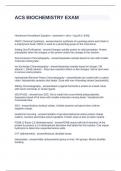Samenvatting
Samenvatting Strafrecht en privaatrecht Week 1
- Vak
- Instelling
Samenvatting van de voorgeschreven literatuur voor het vak Privaatrecht in perspectief: Strafrecht en privaatrecht, week 1 Bevat een samenvatting van de 4 voorgeschreven artikelen
[Meer zien]












